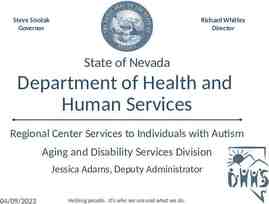Advanced Placement Course Credit Alignment Recommendations Ohio Board
18 Slides548.50 KB
Advanced Placement Course Credit Alignment Recommendations Ohio Board of Regents Webinar April 3, 2009
Ohio’s Law on Advanced Placement In 2007, The State of Ohio Legislature passed legislation mandating the Board of Regents to recommend and the Chancellor to adopt standards for each state institution of higher education to utilize in awarding credit to any student enrolled who has attained a passing score on an advanced placement (AP) examination. Ohio Revised Code 3333.163 Standards for college credit based on advanced placement test scores. (A) As used in this section, “state institution of higher education” has the same meaning as in section 3345.011 of the Revised Code. (B) Not later than April 15, 2008, the articulation and transfer advisory council of the chancellor of the Ohio board of regents shall recommend to the chancellor standards for awarding course credit toward degree requirements at state institutions of higher education based on scores attained on advanced placement examinations. The recommended standards shall include a score on each advanced placement examination that the council considers to be a passing score for which course credit may be awarded. Upon adoption of the standards by the chancellor, each state institution of higher education shall comply with the standards in awarding course credit to any student enrolled in the institution who has attained a passing score on an advanced placement examination. Effective Date: 04-04-2007; 2007 HB2 05-15-2007
Creating Ohio’s AP Policy With these guidelines from the Ohio legislature, a committee was formed to create a policy that would standardize how Ohio’s Public Institutions of Higher Education (PIOHE) accepted AP credit. This committee created a series of guiding principles by which the policy would be created. The resulting policy has been approved by the Ohio Articulation Advisory Council and endorsed by the Chancellor. It should be clear to prospective students how AP credits will be awarded at any PIOHE in Ohio. The policies should promote student success at PIOHE in Ohio. The policy should be fair to “native” students as well as transfer students. There should be a balance between maintaining standards and advantaging students in awarding AP credits. Students should not be disadvantaged in the acceptance of AP credits when transferring within the PIOHE system. Students should consult with academic advisors to determine how AP credits can be used most effectively in meeting degree requirements. It should be recognized that advisors may recommend that students have higher than the minimum required AP score to be successful in courses in their major area or in courses used as prerequisites
Ohio’s AP Policy A score of 3 or higher will provide credit at any PIOHE in Ohio. The credit must count towards graduation and will meet a general education requirement if the course to which the AP credit is equivalent fulfils a requirement at the receiving institution. When it clearly enhances the opportunity for student success, an institution should strongly advise that an AP score of at least a 4 is needed for a student to be successful in a second course in a highly dependent sequence of courses in a STEM area. For example, an advisor should strongly recommend that an AP score of at least a 4 is needed on the AP Chemistry exam in order for the student to be successful in the second course in Chemistry. A score of 3 of higher on an AP exam in a foreign language will provide credit for at least the first year of foreign language at any PIOHE. Each PIOHE in Ohio will provide information on awarding AP credits, which should include the number of credits awarded and the course equivalents earned for a score of 3 or higher. Credits earned via AP exams are transferable within PIOHE in Ohio according to the state’s transfer module and transfer policy.
Advanced Placement Credit Award Catalog Statement The State of Ohio, working through the University System of Ohio, has initiated policies to facilitate the ease of transition from high school to college as well as between and among Ohio’s Public colleges and universities. Beginning in the Fall term 2009: 1.Students obtaining an Advanced Placement (AP) exam score of 3 or above will be awarded the aligned course(s) and credits for the AP exam area(s) successfully completed. 2.General Education courses and credits received will be applied towards graduation and will satisfy a general education requirement if the course(s) to which the AP area is equivalent fulfill a requirement. 3.If an equivalent course is not available for the AP exam area completed, elective or area credit will be awarded in the appropriate academic discipline and will be applied towards graduation where such elective credit options exist within the academic major. 4.Additional courses or credits may be available when a score of 4 or 5 is obtained. Award of credit for higher score values varies depending on the institution and academic discipline. 5.In academic disciplines containing highly dependent sequences (Sciences, Technology, Engineering and Mathematics –STEM) students are strongly advised to confer with the college/university advising staff to ensure they have the appropriate foundation to be successful in advanced coursework within the sequence.
Why Recommendations are Needed In 2008, Ohio’s public institutions of higher education were given these policy statements, and a matrix with each AP test and score, and asked to fill in the credit that would be given under Ohio’s new AP policy. While this information was very useful, there was a large amount of variance in both the courses being matched, and the hours that were matched for those courses.
Problems with Credit Hours Calculus BC – between 5 and 20 quarter hours French Language – between 3 and 14 semester hours Latin Literature – between 3 and 25 quarter hours Physics C: Electrical – between 3 and 10 semester hours
Why Credit Hours are a Problem These large variances in hours would have violated the AP policy and created problems in transfer. The policy would have forced institutions to accept far more credit for a test from an incoming student than they grant to a native student, violating the goal of creating the policy to be fair to both native and transfer students. In order to create a system where the course credit granted was equivalent, the data from institutions was analyzed, along with the recommendations of the College Board and suggested course alignments were created.
A Look At the Advanced Placement Course Credit Alignment Recommendations Recommendations for each test includes: Test name Credit hour recommendations Course match with description Alternate match, if the recommended course is not offered
A Look At the Advanced Placement Course Credit Alignment Recommendations In addition, several tests have outcomes that are closely matched to the outcomes in an Ohio Articulation Number. In these situations, an institution’s match to the suggested OAN should be given for a score of “3” on this test.
A View of the Recommendations A set of instruction and answers to common questions has been included at the beginning of this document. This introduction explains the basics of this policy.
Basis for the Recommendations From the AP Alignment recommendations: This document contains recommendations for course or sequence matches to every AP examination offered in the 2008-2009 academic year. Institutions should match the most appropriate course or sequence to the recommended match provided. Full details of the AP examinations, including learning outcomes, course content and sample test questions can be found here: http://www.collegeboard.com/student/testing/ap/subjects.html. It is the expectation that these recommendations be followed to ensure the equity of credit for the score of 3 on Advanced Placement examinations within the University of Ohio. From the AP Policy: A score of 3 or higher will provide credit at any PIOHE in Ohio. The credit must count towards graduation and will meet a general education requirement if the course to which the AP credit is equivalent fulfils a requirement at the receiving institution. From the AP Catalog Statement: 1. Students obtaining an Advanced Placement (AP) exam score of 3 or above will be awarded the aligned course(s) and credits for the AP exam area(s) successfully completed. 2. General Education courses and credits received will be applied towards graduation and will satisfy a general education requirement if the course(s) to which the AP area is equivalent fulfill a requirement.
Basis for the Recommendations From the AP Alignment recommendations: In instances where an institution does not have an appropriate course and/or sequence match to an AP examination, a recommended range of OTM area credit or elective credit hours has been provided. The exact number of hours awarded should reflect that of similar courses or sequences at that institution. From the AP Catalog Statement : 3. If an equivalent course is not available for the AP exam area completed, elective or area credit will be awarded in the appropriate academic discipline and will be applied towards graduation where such elective credit options exist within the academic major.
Basis for the Recommendations From the AP Alignment recommendations: These recommendations are only for the score of 3. Scores of 4 and 5 may be awarded additional credit hours and/or more advanced courses at the institution’s discretion. In test areas such as foreign language and mathematics, students may be placed in courses at a more advanced level than the courses for which credit hours are awarded, at the institution’s discretion. From the AP Catalog Statement 4. Additional courses or credits may be available when a score of 4 or 5 is obtained. Award of credit for higher score values varies depending on the institution and academic discipline.
Basis for the Recommendations From the AP Alignment recommendations: In accordance with the advanced placement policy, “When it clearly enhances the opportunity for student success, an institution should strongly advise that an AP score of at least 4 is needed for a student to be successful in a second course in a highly dependent sequence of courses in a STEM area. For example, an advisor should strongly recommend that an AP score of at least a 4 is needed on the AP Chemistry exam in order for the student to be successful in the second course in Chemistry.” If a student agrees to follow this recommendation from an academic advisor, he/she should be awarded appropriate area credit in lieu of the recommended AP course credit. From the AP Policy : 2. When it clearly enhances the opportunity for student success, an institution should strongly advise that an AP score of at least a 4 is needed for a student to be successful in a second course in a highly dependent sequence of courses in a STEM area. For example, an advisor should strongly recommend that an AP score of at least a 4 is needed on the AP Chemistry exam in order for the student to be successful in the second course in Chemistry.
Next Steps Institutions should review these recommendations against their AP Matrix and find the areas where they are not aligned. Training for entering matches to the AP tests in CMS will begin in late April/early May. Institutions will be able to submit their AP matches via CMS in May.
Next Steps If an institution has any questions about their AP matrix, or about how to map to an AP test, please contact Samuel Stoddard by phone (614-752-9532) or at [email protected]
Questions Questions? Comments?























